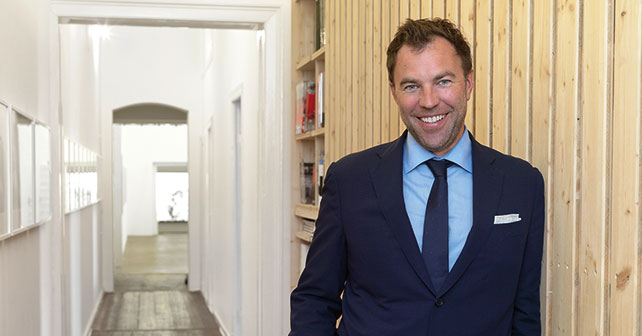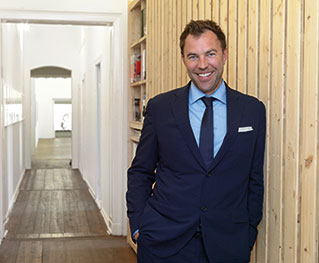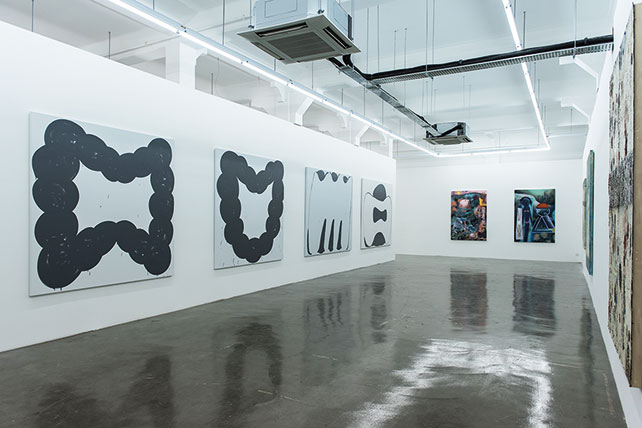

Matthias Arndt, Photo: Bernd Borchardt
Matthias Arndt established ARNDT in 1994 as one of the first contemporary art galleries with an international profile in a district that had formerly been part of East Berlin. Five years ago, ARNDT opened a new gallery in Asia’s new art hub Gillman Barracks in Singapore, expanding its focus to include the vibrant art landscapes of Asia, particularly Southeast Asia and the Pacific region. Matthias Arndt, an expert authority in the field of contemporary art, incorporates his 28 years of experience in the arts industry into the gallery’s program and direction, not only in Berlin and Singapore but all over the world. SAGG Editor-in-Chief Irene Marx interviewed him about his experiences working in the international art world, the establishment of his new gallery in Singapore, and his visions for the future.
Irene Marx: Where can we mostly find you at the moment – in Singapore, in Berlin, or on the plane?
Matthias Arndt: Indeed, I spend a lot of time travelling. In Berlin, the “Berlin Gallery Weekend” just came to an end, I am answering these questions on the flight to Düsseldorf, tomorrow I will be in Venice. My family and I moved to Singapore last year. I started the gallery in 1994 with an international focus: the global dimension of our market requires flexibility and mobility.
IM: There has been quite some debate lately about the Gillman Barracks as an art location. How do you see the situation on-site?
MA: Berlin’s greatest success is the density of 500 galleries and thousands of artists who live in a city with lots of museums, and who turned the town into the central art workshop of Europe and the Western world. Therefore I do believe in the idea of an “art hub” and a “gallery cluster”.
The Gillman Barracks are unique in the South East Asia Pacific region. Regardless of the public agencies’ (editor’s note: Singapore Economic Development Board, JTC Corporation, National Arts Council) motivations for turning Gillman Barracks into a vital art hub: art centres ideally emerge organically, they need the nourishment of the subculture, the entertainment and food service industry, etc.
What happened in Berlin cannot be transferred to Singapore, but the more Singaporeans accept and animate the venue, the better this experiment will succeed.
I do not expect to operate with instant success at any of our locations. ARNDT’s expertise is based on 20 years of experience, our reputation, and our international contacts. I am quite happy at Gillman Barracks.
IM: You have already worked as a gallerist in many locations: Berlin, New York, Sydney, among others. Have you noticed a difference in expectations or different approaches from art collectors?
MA: In general, each audience is different, but I have never aligned our program with local preferences. I would much rather present something new and unknown to each art scene. In Berlin, I started in 1994 with international artists, we brought European art to New York and the USA, we presented international art in Australia, and Asian artists – especially South East Asian art – to Berlin.
In Singapore, we show the “best of both worlds”, with Qiu Zhijie (from China) last winter, Gilbert and George in spring, currently we are showing art from the US, and in September we will present Rodel Tapaya from the Philippines.
This requires a lot of mediation and publication, but I see this as the mission of an art dealer and gallerist. The differences are mainly found in the business conduct of the different markets – here in Asia, we had to get used to a rougher climate. Meanwhile, we are very successful and satisfied with our work in Singapore and Australia.

Current installation at ARNDT Singapore “I Know You Got Soul”, a group exhibition of artworks by contemporary artists based in the US, shown till 21 June 2015.
IM: Is there one exhibition that you organised in Singapore in the last 5 years that was a particular highlight?
MA: Generally, I am happy with all 320 exhibitions for which I was responsible in the last 20 years.
The latest highlight surely was Gilbert and George’s first exhibition in South East Asia.
Their direct approach to difficult themes and problems in our world, the overwhelming visual language, and the exceptional eloquence in their appearance as “living sculptures” turned into the central event of Singapore Art Week in January.
The media reviews, the resonance with the expert audience and the public, but also the commercial success of the exhibition was phenomenal. Some of the artworks will travel from Singapore to international collections and museums. And the artists were enthralled with their stay in Singapore. What else can a gallery owner wish for?
IM: Please share with us your future plans for ARNDT Singapore.
MA: In Singapore, we will continue to present the most important international emerging and established artists, as well as important artists from the Asia Pacific region, such as Khadim Ali from Afghanistan in June, Rodel Tapaya from the Philippines in September, one of the most important female artists Del Kathryin Barton (from Australia) in September, and in December we will show works by the young American artist Amir Nikravan from Los Angeles.
In parallel, my wife Tiffany Wood and I are currently establishing an agency for artist management, the ARNDT ART AGENCY A3, and we will operate it with our team in Singapore.
More info about ARNDT ART AGENCY A3 can be found at www.arndtartagency.com.
ARNDT Singapore is located at Gillman Barracks, 9 Lock Road #03-21, S108937.
The gallery website can be found at www.arndtberlin.com.






